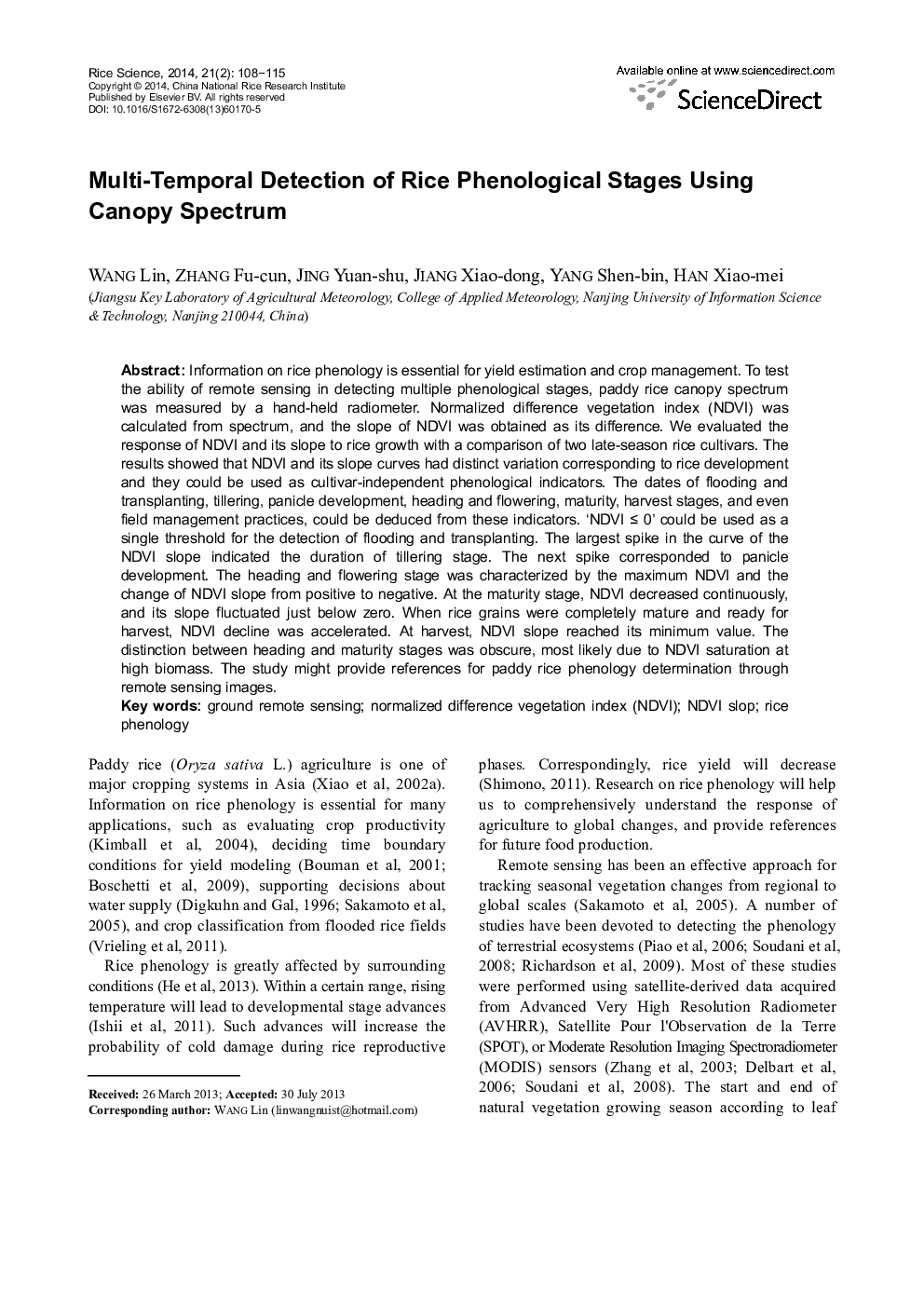| Article ID | Journal | Published Year | Pages | File Type |
|---|---|---|---|---|
| 4501728 | Rice Science | 2014 | 8 Pages |
Information on rice phenology is essential for yield estimation and crop management. To test the ability of remote sensing in detecting multiple phenological stages, paddy rice canopy spectrum was measured by a hand-held radiometer. Normalized difference vegetation index (NDVI) was calculated from spectrum, and the slope of NDVI was obtained as its difference. We evaluated the response of NDVI and its slope to rice growth with a comparison of two late-season rice cultivars. The results showed that NDVI and its slope curves had distinct variation corresponding to rice development and they could be used as cultivar-independent phenological indicators. The dates of flooding and transplanting, tillering, panicle development, heading and flowering, maturity, harvest stages, and even field management practices, could be deduced from these indicators. ‘NDVI ≤ 0’ could be used as a single threshold for the detection of flooding and transplanting. The largest spike in the curve of the NDVI slope indicated the duration of tillering stage. The next spike corresponded to panicle development. The heading and flowering stage was characterized by the maximum NDVI and the change of NDVI slope from positive to negative. At the maturity stage, NDVI decreased continuously, and its slope fluctuated just below zero. When rice grains were completely mature and ready for harvest, NDVI decline was accelerated. At harvest, NDVI slope reached its minimum value. The distinction between heading and maturity stages was obscure, most likely due to NDVI saturation at high biomass. The study might provide references for paddy rice phenology determination through remote sensing images.
